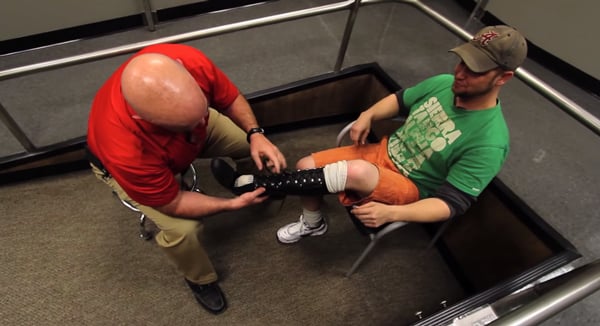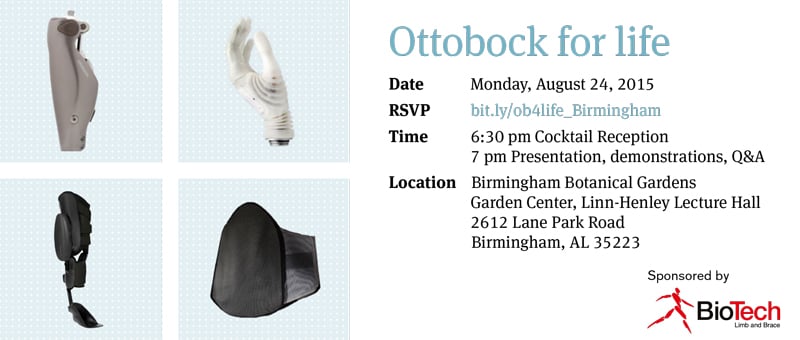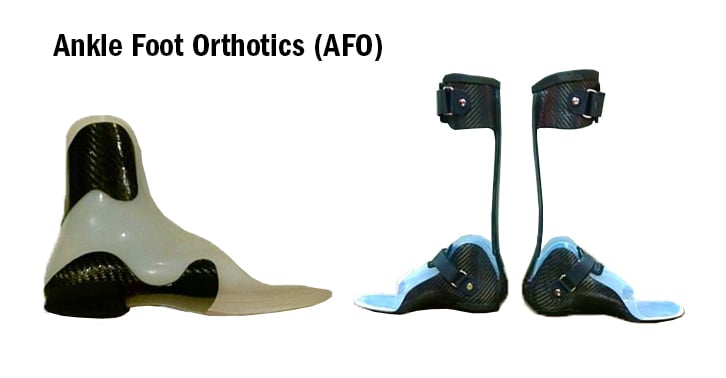 Traveling can be very exciting! As you plan for your relaxing trip, there are a few things that can help you when traveling with a prosthesis.
Traveling can be very exciting! As you plan for your relaxing trip, there are a few things that can help you when traveling with a prosthesis.
Security at an airport often causes the most complications, but there are other considerations to traveling with a prosthetic device. Read on to learn what you need to know before you go.
Helpful Tips for Traveling
It is helpful to know that any passenger traveling with a prosthesis has the right to be screened without removing it. Providing documentation of medical conditions, however, does not exempt any passenger from additional screening if it is required.
Pat downs, the metal detectors, and imaging tools are all ways in which passengers may be screened. Be prepared. TSA officers may ask you to lift clothing or remove a belt to see your prosthesis and/or test your prosthetic device via X-ray for harmful materials.
The Transportation Security Administration (TSA) has a help line called TSA Cares you can call to receive proper guidance on traveling with various needs, including travelers who have experienced limb loss.
When you are preparing to travel with a prosthesis, orthotic device, or other personal equipment, call TSA Cares up to 72 hours in advance for assistance. You can speak to a representative who can assist you with particular questions.
Tips Before the Trip
Just like you do with everything else before your trip, make sure your prosthesis is in good condition before you leave for your trip. You don’t want any problems while you’re trying to relax. Inspect your suspension. Make sure the straps are not frayed.
Make sure everything has been cleaned well with soap and a washcloth. Look at any liners to check for gaps that may need glue or tears that may need more than that. Also, check for any rust or loose screws.
What type of weather and environment will you be visiting? Depending on your destination, you may want to take a prosthetic skin for protection. Keep some extra prosthetic socks and socket liners with you as well. Duct tape and glue, if they are small enough, may be helpful to keep around as well in case you need to make some minor repairs along the way. Don’t forget any creams or ointments you may use for comfort as well as any prescribed medication. Plastic bags or ponchos can be helpful to have as well to protect from water and sand if need be.
In the end, the most important thing is keeping in contact with your trusted prosthetics professional. They can help you in case of any emergencies and can give advice on the proper care while traveling with a prosthesis.
At BioTech, we ensure quality service always. Our team is here to serve you with professionalism and experience. Contact BioTech today to learn more about your possibilities.
Chad Bailey’s life was changed 12 years ago when he lost his foot from the heel forward. He sought an orthotic device that would give him a comfort fit and make him feel like he had his foot again. Instead, he received a brace that was made of solid plastic and hurt so much that he couldn’t effectively use it.
Then Chad turned to BioTech, which built the second brace. Chad has been using the brace that BioTech created for him for 10 years now and says he couldn’t ask for anything better!
What was the difference? BioTech uses cutting edge technology to custom fabricate each piece for the individual.
BioTech Uses Carbon Technology
Eric says that the key to creating the perfect brace for Chad was BioTech’s use of carbon technology. The company is taking technology that was previously only available for prosthetics and they are applying it to orthotics.
Chad’s brace was created in BioTech’s own carbon laboratory in Birmingham, Alabama. Most prosthetic and orthotic facilities don’t have a carbon laboratory, but BioTech has this technology in house to ensure quality and a perfect fit for our clients.
We used a unique application of pre-impregnated carbons that give the brace energy storing capability. The carbon is laid up to suit the individual based on their height, weight, and activity level. BioTech’s carbon technology has given Chad the toe spring to make him feel like he’s got his foot back!
Customer Satisfaction is our Goal
At BioTech, our customers are like family. We want them to be able to achieve anything they want to accomplish and we will do everything in our power to help them along the way!
When asked about his experience with BioTech, Chad smiles and says,”It’s wonderful. They do a great job here.”
Are You Ready to Experience a Custom Fit Created Just for You?
Purchasing a prosthesis or orthoses shouldn’t be like buying clothes. There is no “off the rack” solution. At BioTech, your comfort and ability are our number one priority.
If you are ready to experience the comfort that comes from having a custom piece created just for you, contact BioTech today. We want you to help you achieve your possibilities!
We are so excited to sponsor the Ottobock for Life Roadshow this August 24 at the Birmingham Botanical Gardens! The event will feature the newest products in prosthetics, including the most advanced technologies.
Come hear powerful stories of quality outcomes from people wearing the prosthetics themselves, and witness an appearance from a very special guest! It’s an event you don’t want to miss.
Ottobock is today’s technology leader in prosthetics. Below we have listed just a few of the incredible things to look forward to at the Ottobock for Life Event.
The Michelangelo Prosthetic Hand
The Michelangelo Prosthetic hand is perhaps the most exciting prosthetic to be showcased at Ottobock for Life. This hand uses electrical pulses from the body to put the hand in motion. By attaching electrodes to the skin, you learn to flex a certain muscle in order to lift a finger, turn your wrist, grip a cup, and so on!
It is capable of seven grip types and provides a flexible wrist. It’s designed to work as close to the functions of a human hand as possible and was aesthetically designed to blend beautifully into the natural body image.
The C Brace
The C brace is an orthotropic mobility system that is built to deliver increased mobility. Patients who use the C brace are most excited about its ability to easily increase and decrease speeds, and gain greater knee flexion. Its greatest advantage is the ability to provide support throughout an entire gait cycle, versus the common lock and unlock prosthetic knee joints.
Extra Goodies
The Michelangelo Hand and C Brace aren’t enough? You will also get to learn more about microprocessor knees, and the Triton Smart Ankle.
Prior to the event there will be thirty minutes of delicious appetizers, beverages and mingling. Soon after, Ottobock’s clinical specialist, Byron Backus, CP, will be speaking on the technologies and functions behind their newest and most exciting prosthetics. Patients using their prosthetics will give personal testimonies and demonstrations.
All of this is great, but don’t leave too soon! Before the presentations are over, Noah Galloway from Dancing with the Stars will make an appearance. Following Ottobock for Life will be a cocktail reception and Meet and Greet with Noah himself!
Register before it fills up!
BioTech is so proud to be sponsoring such an educational and life changing event. Hearing straight from Ottobock specialists and patients is a once in a lifetime opportunity.
If you are interested in any of the technologies Ottobock presents, you can RSVP via email to schedule an appointment with BioTech for the following Tuesday and Wednesday to try them on yourself!
Ankle foot orthotics (AFOs) are simple and yet revolutionary. They help improve movement for people everyday who suffer from a wide variety of conditions and impairments, and are instrumental in ensuring greater mobility.
To be effective, ankle foot orthotics need to be adjusted frequently and tended to with care. They need to be properly cleaned as well. Here is more information on AFOs, including how to care for them.
What Are Ankle Foot Orthotics?
Orthotics help improve the efficiency and functionality of joints as well as increase stabilization. Ankle foot orthotics are custom designed to stabilize weak muscles and help reduce pain in joints.
Typically, the orthoses are braces that surround the ankle and foot. They are L-shaped, made of metal and/or thermoplastic. They help control the movement of the foot and ankle and adjust for development.
How to Use and Care For Your Ankle Foot Orthotic
The best way to wear your ankle foot orthotic is by wearing a shoe with laces. Try using a shoehorn if you are having trouble putting it in your shoe. Wear a size that allows for the AFO to fit in comfortably. Wearing a long sock can help.
Make sure your skin is clean and dry when you put the brace on, but know that sweat is normal. Wearing athletic socks can help with sweating.
Putting on your ankle foot orthotic can feel awkward and uncomfortable at first, so check often for pressure points, red spots, and sores. Always contact your doctor or therapist immediately if you feel pain or if you notice any blisters or marks that do not go away. If you have grown, check that the brace still fits. If your foot has grown or the brace is too snug, take your orthotic in to a specialist. A minor adjustment may be necessary.
Beyond adjustments and fit which should be tended to by a professional, caring for your brace is relatively simple.
Cleaning your brace is important. Use a little soap and a damp wash cloth. Clean the thermoplastic sections at least once a week and lubricate the metal joints when necessary. Allow the brace to air dry or towel try. Do not put it in a drying machine unless you have asked your doctor if that is okay. Often the padding, metal, and plastic found in ankle foot orthotics should not come in contact with intense heat.
It is very important to attend your follow-up appointments and heed all instructions from your specialist.
Let the Experts at BioTech Help Today
Read more about the proper care for your ankle foot orthotic at BioTech Limb and Brace. Let our experts design a brace that will improve your functionality and efficiency while still providing you with utmost comfort. We specialize in custom prosthetics and orthotics and are here to offer the support you need.
Contact us today to make an appointment.
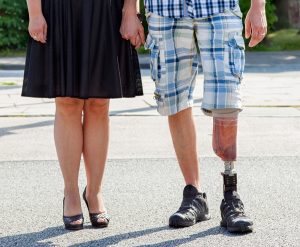 Phantom pain is pain that can be felt by those who have lost a limb. The pain feels like it is coming from that limb that is no longer there. Phantom pain is most often experienced in amputee patients, not those already born without limbs.
Phantom pain is pain that can be felt by those who have lost a limb. The pain feels like it is coming from that limb that is no longer there. Phantom pain is most often experienced in amputee patients, not those already born without limbs.
Not long ago, doctors theorized that post-amputation phantom pain was psychological. However, it has now been identified as a physical problem. Experts have observed neural activity in the brain during these phantom pain episodes originating from nerves in the spinal cord and other limbs.
For many patients, phantom pain is post-surgery phenomenon that improves with time. However, for others the pain does not go away. To manage that pain, one should always seek professional advice from their doctor to receive proper treatment, in the form of medication and/or therapy.
Here’s more on phantom pain and how to handle it.
Symptoms and Causes of Phantom Pain
The symptoms of phantom pain are exactly that: pain. Throbbing, stinging, burning, shooting sensations from limbs that are no longer there constitute phantom pain.
Researchers are still unclear as to the cause of phantom pain, but with the help of diagnostic imaging scans it has become apparent that the brain can receive mixed signals from the nerves. The nerve ends in the area of the missing limb may send signals to the brain which trigger pain even if it is mild discomfort or just a touch. Sometimes, the brain may even reroute the nerve signals.
For example, sensory nerves in other parts of the body like the face may trigger phantom pain from a missing right leg. So that when you touch that part of your face, your brain registers that sensation as leg pain. It truly is a fascinating phenomenon.
How to Fight Phantom Pain
Often, amputees feel the most pain in the remaining body part or the stump. This pain can be extremely challenging to live with. However, it does usually fade with time, and it can be both prevented and treated. Phantom pain and stump pain tend to occur in the lower limbs (toes, feet, legs), and they are usually sparked by changes in the weather, pressure from other objects on the remaining body parts, stress, and poorly-fitting prosthetics.
Therapy techniques like massages, electrical stimulation through EMGs (electromyography), stump socks and proper skin care, as well as prosthetic fittings, can all help. Treatment focuses on how changing the way the sensations are represented in the brain. Seeing a physical therapist is often advantageous as well. Exercises, manipulation, and training can be good for your limbs in general and especially to deal with the pain.
With the right medication and physical therapy, this pain can be treated. To help prevent stump and phantom pain in the first place, getting a custom-fit prosthetic is beneficial. The right professionals can make sure your prosthetic fits well, provides you with comfort and convenience, and adds to your everyday functionality while also making sure that your body is not experiencing pressure and discomfort from the limb.
Contact BioTech Limb and Brace Today
BioTech customizes prosthetics to ensure your functionality and comfort. Our goal is to create limbs that fit you perfectly and provide you with both comfort and convenience. Contact BioTech today and recognize your possibilities!
Hear Lee George's story and how he turned to BioTech Limb and Brace for a custom prosthesis that allows him to ride his motorcycle!
Not long ago, Lee George received a report from one of his crews in the field. They were performing electrical work outside and needed him to take a look at a problem.
Lee arrived at the scene, went up in a bucket truck, and scoped out the problem. It didn’t take long before the situation was handled.
Stepping back to take a look at the scene, Lee had something happen to him – and it changed his life.
Within a split second, 13,000 volts of electricity went through Lee’s body from a hot ground wire. The jolt not only sent life-threatening amounts of electricity through his body; it also severely burned him. By the time he had been treated to medical care at the hospital, he had received third-degree burns over 50 percent of his body – resulting in the loss of two fingers on his right hand, a six-inch hole in his skull, and the complete loss of his entire left arm.
It’s difficult to recover from such a tragic and sudden circumstance like that. But while doctors were worrying about his chances of survival, Lee was worrying about something else – how he would be able to ride his beloved motorcycle. (It’s in his blood; his family owned the first Harley-Davidson dealership in the state of Alabama.)
After his 197-day stay in the trauma ICU, we were able to help Lee in his quest to get back in the saddle by outfitting him with a state-of-the-art prosthesis – the i-limb ultra revolution - to replace his left arm. This prosthesis allows him to do much of what he did before, made possible by the technology in the piece – including individual motors in each digit that enable different grip patterns to help him in a variety of situations.
With his prosthesis, Lee can carry on living his life, including driving his motorcycle wherever he pleases.
That’s exactly what Lee recommends to other people in his situation who have lost limbs and are faced with the task and trial of living life after a challenge. He says, “You have to stay active and carry on with your life” doing the things you love to do, no matter what.
At BioTech, those are the possibilities we love to help create.
Check out Lee’s video for more about his story, and contact BioTech for a consultation about you or a loved one.
(Oh, and be sure to wave to Lee if you see on him the road with his chopper.)
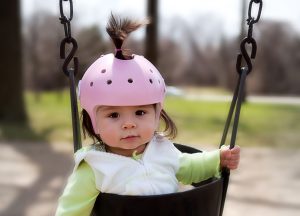 Craniosynostosis is a condition that occurs when one or more of the cranial sutures in the skull fuses too early, affecting approximately one in 2,000 infants.
Craniosynostosis is a condition that occurs when one or more of the cranial sutures in the skull fuses too early, affecting approximately one in 2,000 infants.
What Are the Symptoms?
One of the first signs that parents will often notice is that their baby has a misshapen head. There are a few other things that can cause a misshapen head, such as the cone-shaped appearance a baby’s head may have right after birth from traveling through the birth canal, or a flat spot on the back of the head from a lack of tummy time.
Therefore, it’s important to visit your doctor if you suspect any abnormalities to get a proper diagnosis.
Another sign of craniosynostosis is a missing fontanelle, commonly known of as a soft spot. The soft spot is the space that is filled in when the cranial sutures fuse. If you notice that your infant is missing a soft spot or if there is a ridge where the soft spot should be, this is a sign that he or she may have craniosynostosis.
The final sign is a lack of head growth or extremely slow head growth. At your infant’s pediatrician visits, the doctor will measure their head circumference and chart the growth.
What Are the Risks?
The prognosis is good for infants who are diagnosed early. However, if left untreated craniosynostosis can cause dangerously high pressure in the brain or even developmental delays. The brain is still growing in infants and needs enough room to properly expand.
How Is Craniosynostosis Treated?
The first step in treating craniosynostosis is surgery. During surgery the fused bone is removed, opening up space for the skull to grow. The younger the child is at the time of surgery, the better. The surgeon can use smaller incisions and the growing brain can help reshape the skull as the child gets older.
After surgery, the child will need to wear a special helmet for up to a year to reshape the head. This helmet is typically worn 24 hours a day so comfort and proper fit is very important - this is where BioTech comes in!
BioTech Can Create a Custom Device for Cranial Remodeling
If your child has been diagnosed with craniosynostosis, BioTech can help create a custom helmet for your little one.
We create a 3D scan of the child’s head that records detailed measurements. This is a non-invasive, pain-free procedure that allows us to create a comfortable helmet.
The child is then fitted with a lightweight, plastic and foam orthosis to remold the head into the proper shape.
Contact BioTech today and get a free evaluation from our cranial remolding center.
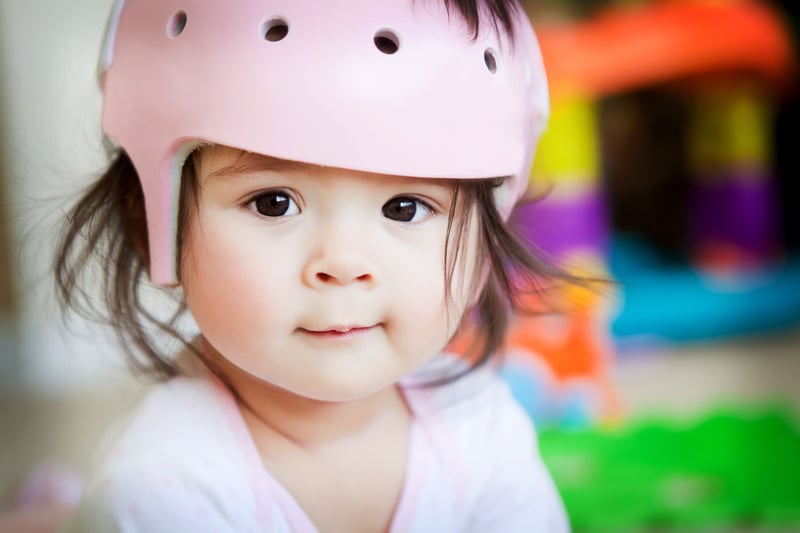 One condition that has become more common today in infants than ever before is cranial asymmetry.
One condition that has become more common today in infants than ever before is cranial asymmetry.
This condition is a cranial deformation that impacts 18 to 28 percent of infants. The rise of this condition is directly related to how we let infants sleep today – on their backs for long periods of time. This comes from a “Back to Sleep” campaign launched in 1992 from the American Academy of Pediatrics.
Cranial remodeling is a treatment that was created as a way to combat and ultimately treat cranial asymmetry. Here, we’ll explain cranial asymmetry and then discuss how cranial remodeling can help.
Cranial Asymmetry Defined
Cranial asymmetry is when an infant’s skull becomes deformed. Sometimes this happens prior to birth, or even during birth; other times it happens due to how the baby sleeps. The main cause is a restriction of growth in a fixed area.
There are a few different types of cranial asymmetry:
- Plagiocephaly: when one side of the back of the infant’s head is flat, resulting in a forehead bulge on the same side
- Brachycephaly: when the back of the head is flattened symmetrically
- Scaphocephaly: when the infant’s head is long from the front to the back and narrow from one side to the other
Cranial asymmetry can be prevented or treated early on through the use of cradling or repositioning. If a treatment plan hasn’t happened prior to three months of age, however, deformity could result, which means cranial remodeling might be needed.
Cranial Remodeling Explained
Cranial remodeling is a treatment process designed to correct the deformities caused by cranial asymmetry.
This treatment starts at three months of age and can be performed all the way up to 18 months. It involves carefully measuring your infant’s head and obtaining precise measurements that enable the creation of a special helmet that is then fitted to the infant.
The helmets themselves are made of a hard outer shell constructed from plastic and lined with foam that ensures a snug but comfortable fit for the infant.
By wearing this helmet 23-24 hours per day (removed only to clean it), the infant will start to have his or her head gently remodeled back into correct shape and alignment. Your orthotic specialist will periodically measure and evaluate the progress made by the helmet over the next few months (treatment typically lasts three to four months).
The ideal end result is a correctly aligned head free of major deformities.
If you think your infant may have cranial asymmetry and may be in need of a consultation for a cranial helmet to correct the condition, then please contact BioTech.
In November of 2003, Cindy Crook went into labor at only 32 weeks pregnant. She had a beautiful daughter, Mary Kathryn, that she affectionately calls Katy. As Katy got older it became evident that she was experiencing neurological delays.
One of her biggest struggles was walking. Cindy was committed to doing everything possible to help her daughter. She made the decision to contact Eric at BioTech.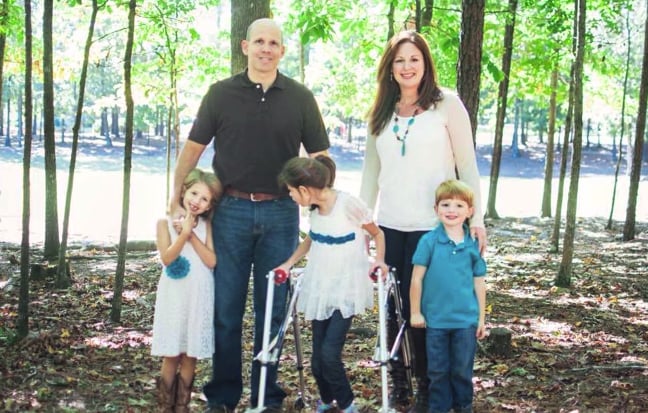
BioTech Fitted Katy with a Custom Brace
Cindy brought her daughter to BioTech and Eric casted her foot. He was then able to create a brace that fit her perfectly. Thanks to the support of the brace, Katy was able to walk with assistance. For several years, this was an effective solution.
Getting Older Presents New Challenges
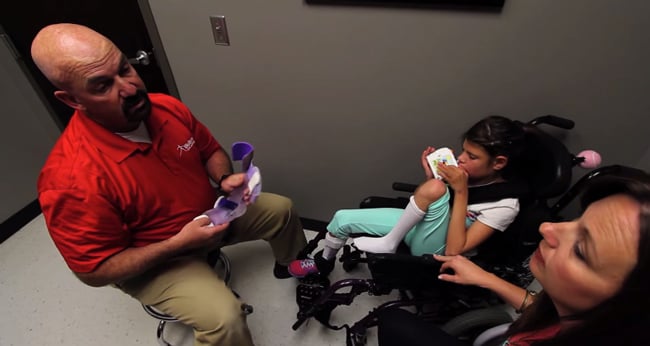 Now that Katy is 11 years old, walking has become more difficult. She is taller and bigger. This makes it a much bigger challenge to continue walking. Understandably, this has been really tough for Cindy. It’s hard, as a parent, to see your child wanting to walk and collapsing because she’s simply not able.
Now that Katy is 11 years old, walking has become more difficult. She is taller and bigger. This makes it a much bigger challenge to continue walking. Understandably, this has been really tough for Cindy. It’s hard, as a parent, to see your child wanting to walk and collapsing because she’s simply not able.
Now, more than ever, Cindy is dedicated to giving her daughter every resource necessary to walk. She says,”As long as she can take that one step, I’m going to continue to push her. I’m not going to give up until she absolutely won’t do anymore.”
It’s Personal with BioTech
When Cindy expressed her concerns to Eric at BioTech, he was completely supportive. He told her,”I’ve got your back” and assured her that he is going to do everything he can to help Katy continue to walk.
For Eric, this isn’t just a job. It’s very personal to him. He grew up with a sister who had special needs due to cerebral palsy. Because of his own experiences, he takes his job very seriously and is committed to providing the highest quality service to help families like the Crook family.
Do You Need Orthotic or Prosthetic Services? Contact BioTech Today!
If you need orthotic or prosthetic services and want a company that won’t give up until you have the best possible solution, contact BioTech today.
At BioTech, our patients become our family. Join our family today and learn how we can help you achieve your possibilities!
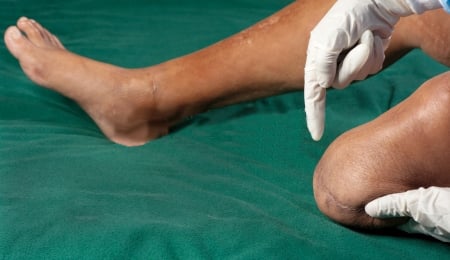 Amputation surgery can be an overwhelming experience. The time you spend recovering in the hospital can seem like a blur in your memory as you work to process all of the information and cope with your new life. Understandably so, it can be easy to forget the post-op self-care tips you received at discharge.
Amputation surgery can be an overwhelming experience. The time you spend recovering in the hospital can seem like a blur in your memory as you work to process all of the information and cope with your new life. Understandably so, it can be easy to forget the post-op self-care tips you received at discharge.
At BioTech we understand the importance of proper self-care while healing from your amputation surgery. A proper healing process is key to the effective use of a future prosthesis.
Below are some ways to make sure your healing process goes as smoothly as possible after your amputation surgery.
#1: Follow Doctor’s Orders
Your doctor knows exactly what you need to do for the best outcome of your surgery. Don’t ignore his or her instructions. If you have a question about anything the doctor has told you to do, make sure you express your concerns and get their advice. Never stop any of your treatment without consulting with your doctor first.
Make sure you are positioning your body based on your doctor’s instructions. Laying on your stomach for 20 minutes, three to four times each day, will help to stretch out your hip muscle. Always sit with your stump straight and level and avoid turning it in or out from your body. If you will be lying down for a long period of time, keep your stump elevated to avoid swelling.
If you doctor prescribes you medicine, take it for as long as prescribed. If your doctor orders physical therapy, keep going until your doctor tells you it’s time to stop. If you physician tells you to keep your stump wrapped, wrap it daily and tighten it when it gets loose. Only take it off to shower.
Realizing that your doctor knows best will go a long way towards your healing; therefore, make sure you follow his or her instructions directly for best results now and in the future.
#2: Choose a Healthy Lifestyle
Some of the things that will greatly benefit your healing are the same things that keep anyone healthy. Proper nutrition and exercise will expedite your healing process and keep you in better shape.
Start by switching to a high protein diet. Aim for a protein intake of 1.5-2 grams per kilogram of body weight daily. Limit your sugar as well for the best results. Diabetic amputees should especially control their glucose levels for proper healing.
Another great way to help with healing while improving your overall health is to stop smoking. Ideally, smoking should have ceased four to eight weeks before surgery, but it’s never too late to quit if you did not kick the habit before your operation. Ceasing smoking immediately can greatly reduce post-op complications!
#3: Strengthen Your Body
The stronger your body, the quicker you will recover and the greater likelihood you will be able to successfully adapt to a new prosthesis. You need to build your strength and your endurance.
Doing a good cardio workout, such as swimming, will build up your endurance and improve your general health. Also, because you will have a new center of gravity, balance exercises will be of great benefit. Before engaging in any exercise, consult with your physician first to make sure you are ready.
If you have a lower limb amputation, use weights or resistance bands to work your upper body. Using a walker or wheelchair will require more use of your arms than you are probably used to; therefore, strengthening your arms goes a long way at helping you adapt to your post-op lifestyle.
Working your core helps support your whole body. You can work your core while seated or even in bed. Your physical therapist can give you the best exercises for strengthening your core during your healing process.
Also remember that your unaffected limb will likely be carrying more of the workload now; therefore, be sure to condition it properly. At the same time, you don’t want to ignore the stump. A strong stump is the foundation of proper prosthesis use! Even when it’s hard and even when you would rather do anything but exercise, follow the instructions given to you by your physical therapist. Later, you will be glad that you took their advice.
Contact BioTech Limb and Brace Today for Your Custom Prosthetic Needs
BioTech offers custom prosthetics that will help give you amazing function, helping you to recognize your possibilities!
Our goal is to create a limb that fits you perfectly with the utmost level of comfort and convenience. Contact BioTech today to learn more about how we can help.
